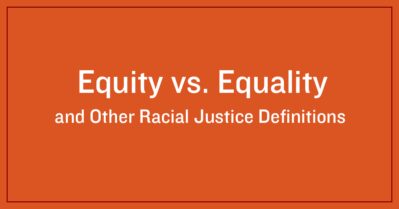Report: How Student Loan Debt and Forgiveness Plans Affect Atlanta’s Borrowers of Color

The racial wealth gap in America means that Black students are more likely to have student debt, borrow in higher quantities and experience greater difficulty repaying their loans. The South Has Something to Say, a new report series produced with support from the Annie E. Casey Foundation, explores this issue. Its first installment focuses on Atlanta, one of many cities where borrowers of color experience greater harm as a result of the student debt crisis.
“Reducing and preventing burdensome debt is a major pillar of the Casey Foundation’s work,” says Beadsie Woo, who serves as the Foundation’s director of Family and Youth Financial Stability. “This report offers some important insights into how borrowers of color are especially harmed by student loan debt and its side effects in Atlanta.”
Mapping Student Debt Disparities in Atlanta
The South Has Something to Say shares several key findings:
- Atlanta’s Black neighborhoods hold disproportionate student loan debt. Between 2010 and 2020, Black neighborhoods in Atlanta showed higher average student loan balances compared to predominantly white areas of the city. Between 2010 and 2018, the average student debt burden held by borrowers in majority Black ZIP codes increased from $1,500 to almost $7,000.
- The student loan payment freeze gave a lifeline to Black borrowers in Atlanta. In 2015, 20% of all households in majority Black neighborhoods were behind on student loan payments. Due to the federal government’s moratorium on student loan payments during the COVID-19 pandemic, the average rate of loan payment delinquency in these neighborhoods dropped from 19% in 2015 to 2% in 2020.
- Black borrowers in Atlanta are still struggling with debt. Although the pause on student loan payments has provided temporary relief, borrowers in Atlanta’s majority Black neighborhoods continue to hold debt that has remained constant or continues to grow.
Projecting the Benefits of Student Loan Debt Relief
In August 2022, the Biden Administration announced a plan to forgive up to $10,000 in student loan debt for Americans who make less than $125,000 annually, and up to $20,000 for Pell Grant recipients with loans held by the Department of Education.
Although the Supreme Court determined that President Biden had overstepped his authority with this proposed relief in June of 2023, the report examined how this proposed plan would have affected Atlanta borrowers:
- Every Atlantan with student loan debt would benefit. If the Biden Administration’s original plan had been enacted, between 24% and 44% of borrowers in Atlanta would have had their student loan debts eliminated, and roughly 25% of all Atlantans would have their student loan burdens significantly reduced.
- Black borrowers in Atlanta would have especially benefitted in two ways:
- Borrowers in majority-Black neighborhoods are more likely to fall behind on student loan payments. Because of this, any action to cancel a substantial share of student debt would strengthen their credit profiles.
- Borrowers in majority-Black ZIP codes typically hold higher debt balances than borrowers in majority-white ZIP codes. As a result, the Biden Administration’s plan would have generated greater relief for these Black borrowers.
- Black borrowers would remain in debt. Even if the Administration’s plan were put into action, many Atlantans in majority-Black neighborhoods would continue to carry heavy debt burdens.
In response to the Supreme Court’s ruling, the Biden Administration announced that the Department of Education would automatically forgive the federal student loan debt of over 804,000 Americans. This relief will eliminate $39 billion dollars in debt.
In addition, the Administration has also announced new actions that will provide relief for existing student loan debt holders. This includes:
- A new rule-making process, initiated by Secretary of Education Miguel Cardona, intended to create an alternative path to debt relief for as many borrowers as possible.
- A more affordable payment plan from the Department of Education designed to help the average borrower save more than $1,000 per year. The Saving on a Valuable Education (SAVE) plan will cut borrowers’ monthly payments in half, lower many borrowers’ monthly payments to $0 and ensure balances don’t grow due to unpaid interest.
- A yearlong “on-ramp” to debt repayment from October 2023 through September 2024 for financially vulnerable borrowers will mean borrowers are not considered delinquent, placed in default or referred to debt collection agencies.
About the Series
The South Has Something to Say is a product of the Student Borrower Protection Center, a Casey Foundation grantee. It stems from the Center’s partnership with the University of California, Berkeley and a review of data gathered by the University of California Consumer Credit Panel.
Learn more about the roots of the student debt crisis and proposed solutions





